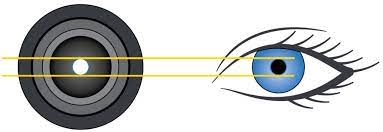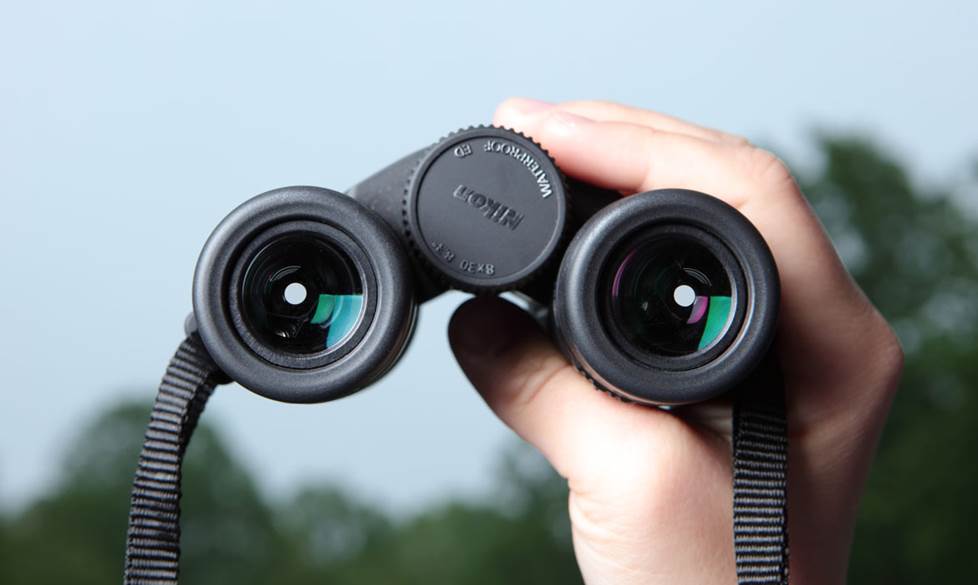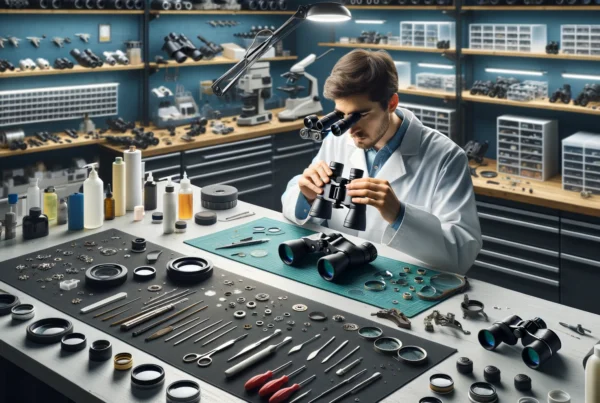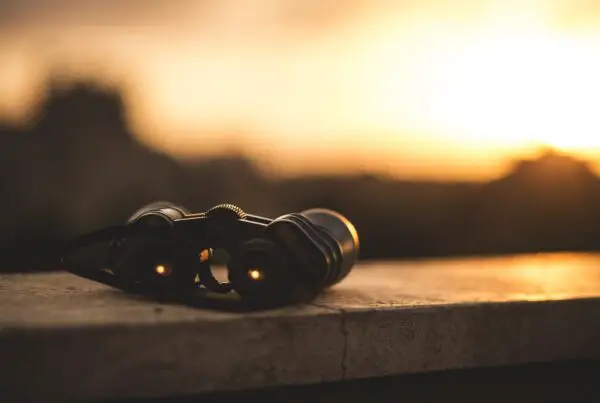Contents
- Exit Pupil — Explained
- Exit Pupil Diameter
- Size of the Exit Pupil
- Low Light Performance
- How Exit Pupil Affects Low Light Performance
- The Role of Exit Pupil in Low Light Conditions
- Choosing the Right Exit Pupil for Low Light Performance
- Tips for Improving Low Light Viewing Experience
- Frequently Asked Questions (FAQs)
- Conclusion
Have you ever ventured into the mysteries of the night, seeking the secrets of the stars, or marveled at the elusive creatures that emerge in the twilight hours? Whether you’re an astronomy enthusiast, wildlife observer, or simply a lover of the great outdoors, binoculars are your trusted companions.
When it comes to binoculars, understanding the concept of exit pupil is crucial, especially for low light performance.
An exit pupil is a virtual aperture in an optical system and can be seen when you hold the binoculars 30cm away from your eyes and point them toward a bright light.
They grant us a closer look at the world beyond our reach, but did you know that their performance in low light conditions hinges on a fascinating factor known as the “exit pupil”?
Exit Pupil — Explained
The exit pupil is a fundamental optical concept that governs how much light passes through binoculars and reaches our eyes. It is essentially a virtual aperture created by the objective lenses of the binoculars.
When you hold binoculars away from your eyes and look at the eyepieces directly, you will notice a circular beam of light at the eyepiece – this is the exit pupil. In simple terms, it’s like the gatekeeper that allows light to pass through from the binoculars to our eyes.
Exit Pupil Diameter

The exit pupil diameter can be calculated by dividing the objective lens diameter by the magnification being used. For example, if you have binoculars with a 40 mm objective lens and a magnification of 8x, the exit pupil diameter would be 40 mm divided by 8, which equals 5 mm.
Exit Pupil = Objective Lens Diameter ÷ Magnification
For example, if you have a pair of binoculars with 8×42 specifications, the exit pupil would be:
Exit Pupil = 42 ÷ 8 = 5.25 mm
Size of the Exit Pupil
The size of the exit pupil is important because it determines how much light enters your eye. In low light situations, a larger exit pupil allows more light to enter the eye, resulting in a brighter image.
On the other hand, a smaller exit pupil restricts the amount of light reaching the eye, making the image appear dimmer.

Low Light Performance
To achieve good low-light performance, it is recommended to choose binoculars with an exit pupil of 5 mm or more. This is particularly useful during dawn, dusk, or when viewing in dense tree cover.
How Exit Pupil Affects Low Light Performance
It’s worth noting that the size of the exit pupil also affects the comfort of viewing. As we age, the ability of our eyes to receive light decreases, so older individuals may prefer binoculars with larger exit pupils, such as 8×50 or 8×42, to ensure a bright enough picture without carrying heavy binoculars.
Here are some common configurations for low-light binoculars and their corresponding exit pupil diameters:
- 8×56: 7 mm exit pupil
- 7×50: 7.14 mm exit pupil
The Role of Exit Pupil in Low Light Conditions
Now that we understand what the exit pupil is, let’s explore why it matters, particularly in low light conditions.
#1: Brightness and Image Quality:
In low light situations, such as at dusk or during stargazing sessions, the amount of available light is limited. Binoculars with a larger exit pupil are capable of transmitting more light to your eyes, resulting in a brighter image.
When your eyes struggle to gather light in dark environments, a larger exit pupil compensates for the lack of light and improves the overall brightness and image quality of what you are viewing.
#2: Pupil Size and Light Gathering:
The exit pupil’s importance is closely related to the human eye’s pupil size. In low light, our eyes’ pupils dilate to allow more light to enter and aid visibility.
However, the maximum dilation varies among individuals and decreases with age. If the exit pupil of binoculars is larger than your eye’s dilated pupil, you can take full advantage of the available light, resulting in a brighter and more immersive experience.
Choosing the Right Exit Pupil for Low Light Performance
When selecting binoculars for low light conditions, the exit pupil should be one of your primary considerations. However, finding the ideal exit pupil size involves striking a balance between performance and practicality.
#1: Ideal Exit Pupil Size:
For most people, an exit pupil between 4 mm and 7 mm is considered suitable for low light conditions. Anything smaller than 4 mm might not provide the desired brightness, especially for stargazing or wildlife observation at night.
On the other hand, exit pupils larger than 7 mm can be advantageous, but they can lead to bulkier and heavier binoculars, making them less portable and harder to hold steady for extended periods.
#2: Purpose and Activities:
The ideal exit pupil size also depends on your specific activities. If your main focus is stargazing or observing celestial events, opt for binoculars with a larger exit pupil to enhance your experience under the night sky.
For daytime activities, such as sports events or general nature observation, smaller exit pupils might suffice since lighting conditions are generally more favorable.
Tips for Improving Low Light Viewing Experience
- Regularly clean the lenses and make sure the binoculars are well-adjusted to ensure the best possible image quality.
- Tripods help stabilize binoculars, particularly those with larger objective lenses, for extended stargazing sessions. Filters can also be useful for reducing glare from artificial lights during sports events.
- Give your eyes time to adapt to low light conditions before using binoculars. Avoid using artificial lights or bright screens directly before stargazing or wildlife observation, as this may hinder your eyes’ ability to adjust to the darkness.
Frequently Asked Questions (FAQs)
What exactly is the exit pupil in binoculars?
The exit pupil in binoculars is a virtual aperture formed by the objective lenses. It appears as a circular beam of light visible at the eyepiece when you hold the binoculars away from your eyes. It plays a crucial role in determining the amount of light that reaches your eyes and affects the brightness and image quality of the view.
How does the exit pupil impact low light performance in binoculars?
In low light conditions, the human eye struggles to gather sufficient light to see clearly. The size of the exit pupil is directly related to the brightness of the image seen through the binoculars. A larger exit pupil allows more light to reach your eyes, resulting in a brighter and more detailed view in dim lighting situations.
Is a larger exit pupil always better for low light performance?
Generally, a larger exit pupil is better for low light performance since it gathers more light. However, the optimal exit pupil size depends on the individual’s age and pupil dilation capacity. For most people, an exit pupil between 4 mm and 7 mm is considered suitable for low light viewing.
How can I calculate the exit pupil of my binoculars?
To calculate the exit pupil, you need to know the diameter of the objective lenses (front lenses) and the magnification power of your binoculars. Simply divide the objective lens diameter by the magnification value to get the exit pupil size. For example, if you have 8×42 binoculars, the exit pupil would be 5.25 mm (42 ÷ 8).
Are there different exit pupil requirements for specific activities, such as stargazing or wildlife observation?
Yes, the ideal exit pupil size can vary based on the specific activity. For stargazing or observing celestial events, a larger exit pupil is advantageous, as celestial objects are often faint and require more light gathering. For daytime activities like wildlife observation or sports events, where lighting conditions are generally better, a smaller exit pupil might suffice.
How does the exit pupil relate to the human eye’s pupil size?
The human eye’s pupil size changes based on ambient lighting conditions. In low light, the pupil dilates to allow more light to enter the eye. The exit pupil of binoculars should ideally match or be slightly larger than the dilated pupil size of the observer for optimal light transmission.
What happens if the exit pupil is larger or smaller than my eye’s pupil size?
If the exit pupil is larger than your eye’s pupil size, you will utilize all available light, resulting in a brighter image. However, if the exit pupil is smaller, you won’t fully exploit the light-gathering potential, and the image might appear dimmer than it could be.
Can the exit pupil size affect the weight and size of binoculars?
Yes, the exit pupil size is directly related to the diameter of the objective lenses. Larger objective lenses, which produce larger exit pupils, can result in bulkier and heavier binoculars. Finding the right balance between exit pupil size and portability is essential based on your preferences and usage scenarios.
What other factors should I consider besides exit pupil when choosing binoculars for low light performance?
Besides exit pupil, consider other specifications such as objective lens diameter, magnification, lens coatings, and field of view. These factors collectively contribute to the overall low light performance of the binoculars.
How can I test binoculars for low light performance before purchasing?
Whenever possible, try to test the binoculars in low light conditions. This hands-on experience will give you a better sense of their brightness, clarity, and overall suitability for your intended low light activities.
Conclusion
In summary, understanding the exit pupil in binoculars is essential for optimizing low-light performance. A larger exit pupil allows more light to enter the eye, resulting in a brighter image. When choosing binoculars for low-light situations, look for an exit pupil of 5 mm or more for optimal viewing.

A Binoculars enthusiast, who love exploring skies and watching birds. It is my hobby to collect Binoculars of different kinds and try to explore the world through various lenses. This is all I do to explore happiness by magnifying my beautiful world.




